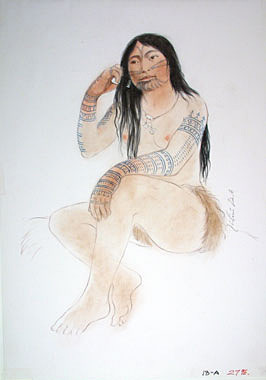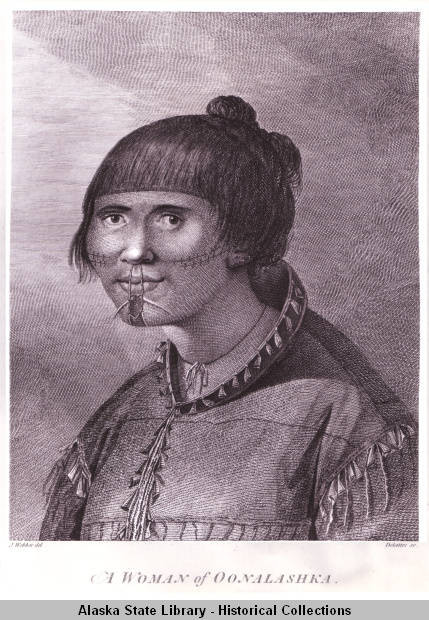Tattoos have been an integral part of human culture for millennia, and among the Indigenous peoples of North America, they held profound significance. Native American Tattoos were far more than mere decorations; they were powerful expressions of identity, spirituality, social status, and personal narratives deeply interwoven with tribal customs and beliefs. Long before European contact, various tribes across the continent practiced tattooing, each developing unique styles, techniques, and meanings that reflected their distinct cultures and worldviews. Exploring the history of Native American tattoos reveals a rich tapestry of tradition and artistry that continues to resonate today.
 The History of Tattoo by CardinalGuzman.wordpress.com
The History of Tattoo by CardinalGuzman.wordpress.com
Ancient Roots of Tattooing
The practice of tattooing is not new to the Americas. Archaeological discoveries reveal its deep history, connecting Native American traditions to global ancient practices. Notably, the discovery of tattooed mummies, such as the Ukok Princess from Siberia dating back to the 5th century BCE, highlights the antiquity of body art. This “Ice Maiden,” unearthed in the Altai Mountains, bore intricate animal-style deer tattoos, demonstrating sophisticated tattooing techniques and the cultural significance of body markings thousands of years ago. These findings underscore that the concept of tattooing, while manifested uniquely across different cultures, shares ancient roots that span continents, including the ancestral lands of Native Americans.
«One famous finding is known as the Ice Maiden, excavated by Russian archaeologist, Natalia Polosmak. Three tattooed mummies (c. 300 BC) were extracted from the permafrost of the Ukok Plateau in the second half of the 20th century.» [1]
«The Ice Maiden’s preserved skin has the mark of an animal-style deer tattoo on one of her shoulders, and another on her wrist and thumb. She was buried in a yellow silk tussah blouse, a crimson-and-white striped wool skirt with a tassel belt, thigh-high white felt leggings, with a marten fur, a small mirror made from polished metal and wood with carved deer figures, and a headdress that stood nearly three feet tall. The size of the headdress necessitated a coffin that was eight feet long. The headdress had a wooden substructure with a molded felt covering and eight carved feline figures covered in gold. There were remains of coriander seeds in a stone dish that may have been provided for the Maiden’s medicinal use.» [2]
Tattooing Among Native American Tribes: An Overview
Across North America, tattooing traditions varied greatly from tribe to tribe, yet common threads existed. For many Native American cultures, tattoos were integral to religious rituals, rites of passage, and warfare. Warriors often received tattoos to commemorate their accomplishments, marking their bodies as living chronicles of their bravery and skill. Young men might earn tattoos by killing enemies in battle, using their bodies as “goal boards” to track their victories. The application of these tattoos was often a significant ceremony, imbued with spiritual meaning and tribal significance.
Tattooing Among the Northern Tribes
The diverse tribes inhabiting the northern regions of North America, from the Arctic Inuit to the Woodland Indians, shared a common practice of tattooing, though with distinct regional variations. Evidence from European explorers and historical records from the 15th century onwards confirms the widespread nature of this art form.
 Inuit women often underwent painful tattooing in the belief that they would not find peace in the afterlife without tattoos.Credit: Atelier Frédéric Back.
Inuit women often underwent painful tattooing in the belief that they would not find peace in the afterlife without tattoos.Credit: Atelier Frédéric Back.
Inuit Tattoos
Among the Inuit, tattoos held deep spiritual significance, particularly for women. Inuit women often underwent extensive and painful tattooing, believing that these markings were necessary for passage to the afterlife. These tattoos were not merely decorative but served as indicators of social status and readiness for marriage and motherhood. Common designs included vertical lines on the chin and more intricate patterns on the cheeks. The tattooing process involved using a needle and thread coated in soot, which was drawn under the skin to create the desired patterns. Older women, often relatives, served as tattooists, passing down this important cultural practice. Men also received tattoos, typically shorter lines on the face, and in some Western Arctic regions, whale hunters used facial lines to record their hunting successes.
Bering Strait Eskimo Tattoos
The Bering Strait Eskimos, inhabiting the region around the Bering Strait, also practiced tattooing with unique customs. Both coastal and inland people, they depended on both sea mammals and land animals for survival and held a deep respect for nature. Tattooing commenced at puberty for both boys and girls. Boys received wrist tattoos to mark their first hunt, while girls were tattooed to signify their first menstruation. Facial lines were common for women, and some also had body tattoos, further emphasizing the role of tattoos in marking life stages and achievements.
Aleut Tattoos and Piercings
To the south, the Aleut people, residing in the Aleutian Islands and parts of Alaska, had a rich tradition of tattoos and piercings. For Aleuts, body art served not only as ornamentation but also as a demonstration of religious beliefs and life accomplishments. Intricate ornamentation on cheeks and chins was common. They believed tattoos and piercings pleased animal spirits and warded off evil. Piercings, especially of the nose, mouth, and ears, were thought to prevent evil entities, “Khoughkh,” from entering the body. Body art enhanced beauty, social standing, and spiritual authority within Aleut society.
 Aleut Woman. Credit: Alaska State Library
Aleut Woman. Credit: Alaska State Library
Cree Indian Tattoos
The Cree Indians, a large Algonquian tribe residing in the northern prairies and forest lands, also incorporated tattooing into their traditions. Cree men often tattooed their entire bodies, while women typically had simpler facial tattoos, usually limited to two or three lines. This difference highlights potential gendered roles and expressions within their tattooing practices.
Pacific Coast Tribal Tattooing
The Pacific Coast, particularly California, with its abundant resources and milder climate, fostered complex cultures where body art flourished. Among the numerous tribes in this region, tattooing was a widespread practice, though specific styles and meanings varied.
Yurok Tattoos: Markers of Age and Status
The Yurok people, living along the Klamath River, had a strong tattooing tradition, especially for women. Yurok women commonly received chin tattoos, starting with a black stripe at around age five, with additional parallel lines added every five years. These lines served as visible markers of age and potentially social status. Some women also had further chin tattoos to denote tribal affiliation. Yurok perspective held that tattoos were essential for women’s appearance in older age, believing that a woman without tattoos would resemble a man in later life.
Tolowa and Hupa Tattoo Practices
Neighboring tribes like the Tolowa and Hupa also practiced chin tattooing among women. Tolowa girls were tattooed before puberty with three vertical stripes on the chin. Hupa women also had three broad vertical lines on their chins, sometimes accompanied by marks at the corners of the mouth. The Hupa also used tattoos for practical purposes, with men using forearm tattoos to measure dentalium shells, a form of currency, indicating the integration of tattooing into daily life and economic systems.
 Hupa. Mr. McCann measuring dentalium shell money against tattoo marks on his forearm. Photograph by Pliny E. Goddard, Hoopa, Humboldt County, 1901 (15-2947).Credit: Hearst Museum Berkeley.
Hupa. Mr. McCann measuring dentalium shell money against tattoo marks on his forearm. Photograph by Pliny E. Goddard, Hoopa, Humboldt County, 1901 (15-2947).Credit: Hearst Museum Berkeley.
Chimariko and Other California Tribes
The Chimariko people, along with tribes like the Shasta and Cahto, also engaged in tattooing, using techniques involving stone knives to create markings on the chin, cheeks, arms, and hands. The diversity of techniques and locations of tattoos across these tribes highlights the widespread and adaptable nature of tattooing in California Native American cultures.
Tattooing Techniques and Materials
Native American tattoo artists utilized ingenious methods and natural materials to create their indelible designs. Lacking modern tattoo equipment, they relied on tools made from animal bones, sharpened fish teeth, obsidian splinters, and pine needles to puncture the skin. For pigments, they used readily available resources like charcoal, soot, and plant dyes. For instance, blue-green hues were derived from specific grasses or cobwebs mixed into the wound. Red pigments were also common. Different tribes employed variations of these techniques, adapting to their local environments and available materials.
Southeastern Tribal Tattooing
The Southeastern tribes, inhabiting a vast region south of the Ohio Valley, represented some of the most advanced societies in North America. These agricultural societies, known for their complex social structures and religious beliefs, also had rich tattooing traditions.
 Dancing Secotan Indians in North Carolina. Watercolour painted by John White in 1585. Credit: Wikipedia
Dancing Secotan Indians in North Carolina. Watercolour painted by John White in 1585. Credit: Wikipedia
Cherokee, Creek, and Seminole Tattoo Styles
Among tribes like the Cherokee, Creek, and Seminole, tattooing was highly prevalent, particularly for men. Tattoos were often blue, but other colors were also used, and designs included flowers, stars, animals, crescent moons, and other symbolic motifs. Men were more extensively tattooed than women, often receiving tattoos as marks of status and achievement, especially in warfare. Southeastern warriors used tattoos and scarification to document their accomplishments, with the process often linked to name-giving ceremonies.
Historical Depictions of Southeastern Tattoos
Seventeenth-century artists John White and Jacques Le Moyne de Morgues documented the Southeastern tribes, providing valuable visual records of their appearance and customs, including tattoos. White’s illustrations depict tattooed individuals in the Virginia area, while Le Moyne, who traveled extensively in Florida, also recorded tattoo practices among Florida Indians. These visual and written accounts offer crucial insights into the tattooing traditions of these tribes during the early contact period.
 English: Mother and child of the Secotan Indians in North Carolina. Watercolour painted by John White in 1585. Credit: Wikipedia
English: Mother and child of the Secotan Indians in North Carolina. Watercolour painted by John White in 1585. Credit: Wikipedia
Mohave and Yuma Tattoo Beliefs
Further west, the Mohave and Yuma tribes, residing along the Colorado River, held strong beliefs about tattoos and the afterlife. Both men and women adorned themselves with elaborate tattoos, including facial tattoos for women that indicated status and lineage. They believed that tattoos were essential for acceptance into the afterlife, with those lacking tattoos relegated to an undesirable fate. Tattoos also served to intimidate enemies in warfare, highlighting their multifaceted role in Mohave and Yuma societies.
 Pioneer: Olive Oatman was taken in by the Mojave tribe after her family was killed. The Mojave tattooed her chin to ensure her passage into the afterlife. Credit: Getty Images/Daily Mail UK
Pioneer: Olive Oatman was taken in by the Mojave tribe after her family was killed. The Mojave tattooed her chin to ensure her passage into the afterlife. Credit: Getty Images/Daily Mail UK
Meaning and Significance of Native American Tattoos
Across the diverse tribes of North America, Native American tattoos carried profound meanings and served various purposes:
- Spiritual and Religious Significance: Tattoos were often integral to religious rituals, ensuring passage to the afterlife, appeasing spirits, and connecting individuals to the spiritual world.
- Social Status and Identity: Tattoos marked social status, tribal affiliation, and roles within the community. They could signify marriageability, age, or lineage.
- Rites of Passage: Tattooing was often associated with important life stages, such as puberty, marriage, and achievements in hunting or warfare.
- Personal Narratives and Accomplishments: Warriors used tattoos to document their bravery and victories, turning their bodies into living records of their personal histories.
- Protection and Healing: Some tattoos were believed to offer protection from evil spirits or promote healing.
- Beauty and Adornment: While deeply symbolic, tattoos also served as a form of personal adornment and enhanced beauty according to tribal aesthetics.
Native American Tattoos Today
While traditional tattooing practices faced disruption due to colonization and cultural suppression, there is a growing resurgence of interest in Native American tattoo traditions today. Contemporary artists and individuals of Native American descent are reclaiming and revitalizing these ancient art forms, often incorporating traditional designs and meanings into modern tattoos. This revival reflects a broader movement of cultural revitalization and a renewed appreciation for the rich heritage of Native American body art. It is crucial to approach Native American tattoo designs with respect and cultural sensitivity, recognizing their profound historical and spiritual significance.
Conclusion
Native American tattoos represent a powerful and diverse tradition of body art that spans millennia and encompasses a vast array of tribal cultures. From the Arctic to the Southeastern Woodlands, and across the Pacific Coast, tattooing held deep cultural, spiritual, and social significance for Indigenous peoples. These markings were not merely skin deep; they were woven into the fabric of Native American life, reflecting beliefs, histories, and identities. Understanding the history and meaning of native american tattoos provides valuable insights into the rich cultural heritage of North America’s First Peoples and underscores the enduring power of body art as a form of cultural expression.
Sources
- Oliver LaFarge “North American Indians” Fredhøis Publishing A / St
- Skin & Ink “September 1997” Larry Flynt Productions
- Skin & Ink “November 1997” Larry Flynt Productions
- Skin & Ink “January 1998” Larry Flynt Productions
- Aschehoug and Golden Dahl’s “Great Norwegian encyclopedia” Kunnskapsforlaget
Online Sources (quoted/checked 30.03.2013)
Photo credits in this article
More about the history of tattoo:
